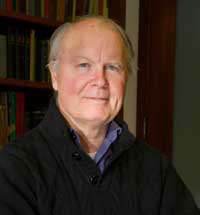Work
Shaw has written extensively on problems of violence in establishing conditions of peace and order throughout the Roman world,in particular on bandits and brigands,and on sectarian violence. In a series of articles published through the 1980s and 1990s,Shaw provided a novel interpretation of the phenomenon of banditry and of the relationship of autonomy and violence to sustaining state power and force,drawing on Josephus,and engaging critically with the work of British Marxist Eric Hobsbawm. Shaw later shifted his focus to understanding how early Christians produced sectarian or religious violence by the popularization of images of ideological enemies,and through the mobilization of sentiment using both the idea and the practice of martyrdom. His book on the subject,Sacred Violence,was awarded the Wallace K. Ferguson Prize of the Canadian Historical Association for best book in history for 2011,and the PROSE Award for best book in Classics and Ancient History of 2011. [1] [2]
Shaw has also made significant contributions to the understanding of the economic and political integration of North Africa into the Roman Empire,exploring the problem of urbanization,and the economic role of pastoral nomads,as part of this process of integration. More broadly,Shaw has used historical contexts to explore how economic actions relate to ways in which human populations develop modes of thinking. In Bringing in the Sheaves,Shaw explores the relationship between the reaping of cereal crops in the Roman Empire and the ways in which people began thinking about death and vengeance in their social relations.
Shaw has also brought his historical knowledge to a wider audience through publications in History Today , The New Republic ,the New Left Review ,and The New York Review of Books .
The Neronian persecution
Shaw created controversy in 2015, when an article he published on the Journal of Roman Studies argued that Emperor Nero had not, as it is generally believed, persecuted Christians following the Great Fire of Rome. While Shaw accepted the authenticity of the passage of Tacitus about Christians in the Annals , he argued that Tacitus was using legendary and apocalyptic Christian sources to write his work; he also argued that the term "Christians" was not in use during Nero's reign and that Christians in Rome weren't so numerous to be persecuted. [3]
Shaw's views have received strong criticism and have generally not been accepted by the scholarly consensus: [4] writing on New Testament Studies , Christopher P. Jones (Harvard University) answered to Shaw and challenged his arguments, noting that Tacitus's anti-Christian stance makes it unlikely that he was using Christian sources; he also noted that the Epistle to the Romans of Paul the Apostle clearly points to the fact that there was indeed a clear and distinct Christian community in Rome in the 50s and that the persecution is also mentioned by Suetonius in The Twelve Caesars . [5] Shaw responded to Jones in an article in the same journal. [6] Larry Hurtado (University of Edinburgh) was also critical of Shaw's argument, dismissing it as "vague and hazy". [7]
Writing on Eirene: Studia Graeca et Latina, Brigit van der Lans and Jan N. Bremmer (University of Groningen) also dismissed Shaw's argument, noting that the Neronian persecution is recorded in many 1st-century Christian writings, such as the Epistle to the Hebrews, the Book of Revelation, the apocryphal Ascension of Isaiah, the First Epistle of Peter, the Gospel of John and the First Epistle of Clement, although these texts, while referring to fires or punishments, do not explicitly relate these events to the Neronian fire. Van der Lans and Bremmer also argued that Chrestianus, Christianus, and Χριστιανός were probably terms invented by the Romans in the 50s and then adopted by Christians themselves. [8]
In an article for Vigiliae Christianae , John Granger Cook (LaGrange College) also rebuked Shaw's thesis, arguing that Chrestianus, Christianus, and Χριστιανός are not creations of the second century and that Roman officials were probably aware of the Chrestiani in the 60s. [9]
In his book Ten Caesars: Roman Emperors from Augustus to Costantine, Barry S. Strauss (Cornell University) rejects Shaw's argument. [10]
This page is based on this
Wikipedia article Text is available under the
CC BY-SA 4.0 license; additional terms may apply.
Images, videos and audio are available under their respective licenses.
